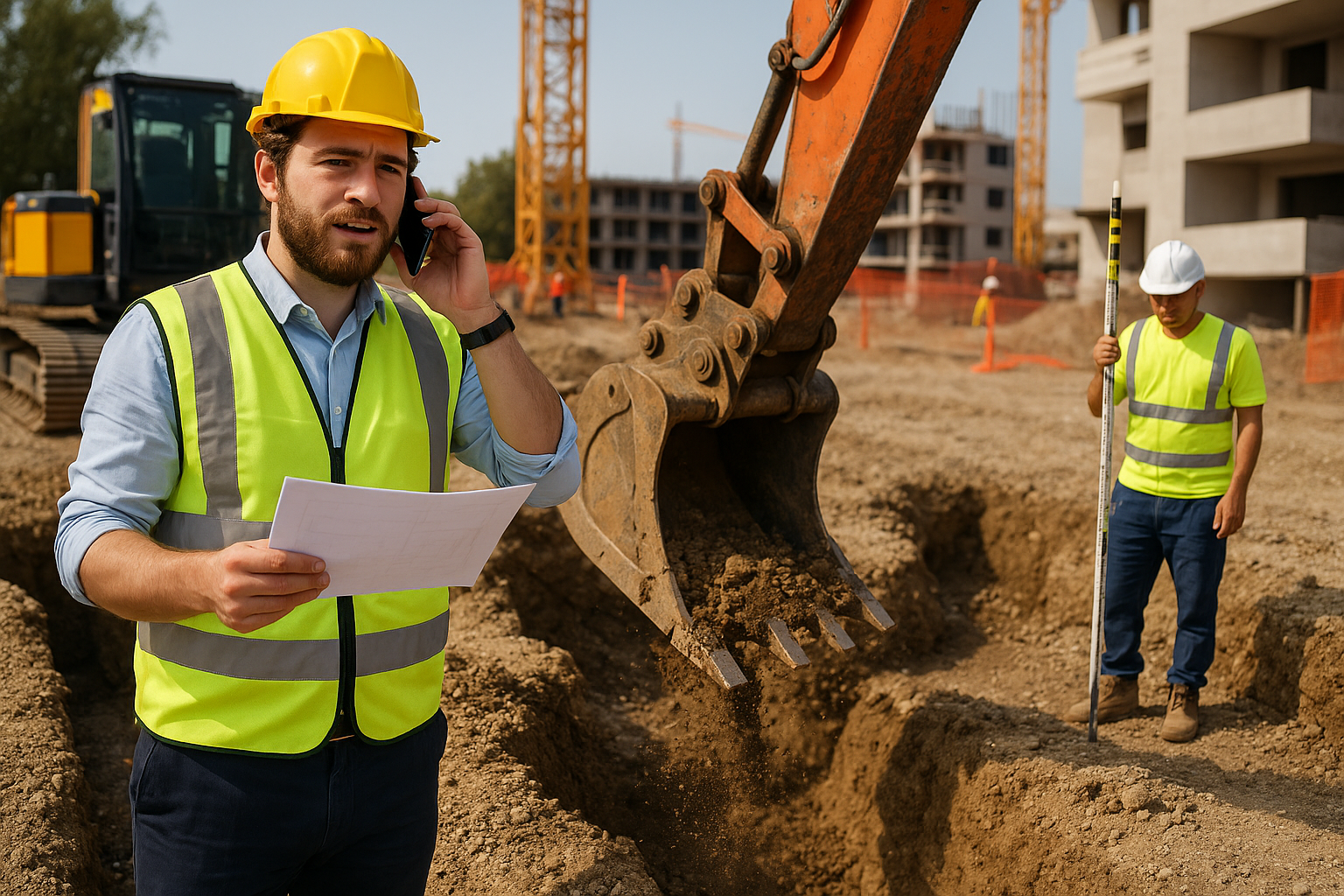Groundworks and New Builds: What You Need to Know
When starting a new build, many people think the real work begins with bricks, blocks and beams. But before any of that, a silent hero is working behind the scenes: groundworks. This first phase of construction prepares the land, creating a safe, level space that supports the entire structure to come. Without it, your new home build could face serious and expensive issues later.
Groundworks is not just about digging holes or moving earth. It covers everything from site clearance and drainage installation to laying the right foundation. It’s the physical preparation that ensures the build happens on safe, stable and properly serviced ground.
Whether you’re a private homeowner planning a new build or a developer tackling a housing project, understanding what goes into groundworks helps you make smart, informed decisions along the way.
What Groundworks Covers
Getting a site ready for a new home is a structured and technical process. Every step matters and connects directly to how solid and safe the final building will be.
Site Preparation and Clearance
The first step usually involves clearing the land. This includes removing trees, weeds, roots, rubbish, or anything else preventing construction. Then we strip off the topsoil, which is full of organic matter, leaving firmer subsoil fit for building over.
Excavation follows. We dig trenches to exact sizes for the foundations, based on structural drawings and building plans. This phase often uses specialist tools such as tracked excavators, dumpers and compactors.
Foundation Installation and Footings
Once the trenches are cut, it’s time for foundation installation. This is where we make sure the house will sit on firm, long-lasting footings that work with the type of soil and weight of the house. Shoddy work here can lead to settlement, cracks or even partial collapse.
Ground conditions can vary greatly. That’s why we carry out soil testing and ground investigations to understand what we’re working with. The results help guide the design and depth of the foundations, whether it’s strip, raft or piled.
Drainage and Utilities Installations
Modern homes need more than just solid ground. During the groundwork phase, we also install drainage for rainwater and foul water, fit septic tanks or connect to public sewer systems. Planning and laying pipework is vital to avoid future water damage or blockages.
We also run in pipes and cables for essential services like water, electricity, gas, and broadband. Creating service trenches early keeps everything neat and minimises digging once the structure is up.
Take drainage as an example. Poorly designed or installed drainage can lead to damp problems inside the house. Our involvement often includes looking at SAP calculations for new builds and heat loss surveys to make sure every fitting supports energy efficiency too.
Landscaping and Site Reinstatement
Finally, once major groundwork activities are complete, we finish up with surface preparation. We might build driveways, pathways, patios, or install basic garden landscaping. These finishing works make the site safer for trades and ready for homeowners to move in when the time comes.
The Importance of Professional Groundworks in New Builds
Building a home without proper groundworks would be like building a treehouse on soft jelly. Ground movement, shifting soil, water ingress or even extreme weather can damage your structure from day one unless the groundwork underneath is reliable.

A well-laid groundwork is where long-term building performance begins. It allows the rest of the project to come together smoothly. If problems appear in this early stage, costs rise and timelines slip. Mistakes like mislevelled foundations or blocked drains can take weeks to correct and have knock-on effects further down the build.
Standards also matter. Every site must meet local building codes and pass inspections to continue to the next phase. At Ratio Seven, we help guide clients through building regulations to ensure every element, from trench depth to surface levels, ticks the right boxes.
Foundation Installation: Why It Cannot Be Rushed
The foundation not only holds up the walls and roof, but also transfers the building’s weight safely into the ground. This must be done according to specifications that match both the land and the design of your home.
No two projects are ever the same. That’s why paying attention to drainage, levels, distances, and materials during the foundation installation phase is essential. Sloppy measurements or poor base compaction can lead to movement, uneven walls, or damp issues that spread to upper floors over time.
We make sure our groundwork and construction specifications work together, saving you the stress of making changes mid-build. It also helps us factor in solutions like airtightness and thermal controls right from the start, supported by air-tightness testing and thermal imaging strategies.
Machinery, Surveys, and The Right Tools
The right tools make a big difference when carrying out groundworks. It’s not just about digging holes. Machines like dumpers, compactors, trenchers and tracked excavators help us do the job more accurately, safely and fast.
Surveys and pre-site reports also help us identify soil types, underground water conditions, and any previous land contamination. With this data, we design drainage systems that don’t flood and foundations that sit on firm, tested ground that meets inspections. This approach supports reliability as well as building cost reduction over the long term.
Getting the Basics Right with Groundworks
Every trade on-site builds on the work done at the groundwork stage. If timelines are tight, errors in groundwork can delay every phase that follows. Teams must work in harmony to make sure the groundworks finish when the structural work is ready to begin.
At Ratio Seven, we keep close contact with your builder and manage this timeline to avoid hold-ups. We also help you track and manage inspections related to air testing, heat loss or damp control, linking our groundwork decisions to your final home’s energy performance.
FAQs
How long do the groundworks take before building begins?
This depends on the site size, condition, and complexity of utilities. A simple single plot might take 1 to 2 weeks, while larger projects or those with drainage or contamination issues can take longer.
Can groundworks affect your energy rating?
Absolutely. Poor ground insulation, drainage layout or damp access can drag down your home’s overall energy performance. That’s why we align our groundwork details with your SAP calculations and energy survey plan at the beginning.
Does every house need soil testing?
Yes, we always recommend a soil survey before any digging. Different soils (clay, sand, chalk) react differently to weight, water and weather. Knowing what’s underneath helps us design the right approach to foundation installation and drainage.
Who checks that the groundwork meets regulations?
Local authority building inspectors usually check at key points like foundation depth and drainage trench levels. Our team works with them to make these checks smooth and on time.
Build from the Ground Up: Why Solid Groundworks Matter in Every New Home
Groundworks is more than a starting point; it’s the backbone of every new build. It keeps your home safe, dry, energy-efficient and structurally sound well into the future. Getting it right from day one means fewer surprises later.
At Ratio Seven, we support developers, homeowners and self-builders by combining precise planning, building knowledge, and practical tools to deliver dependable groundworks that meet every rule and every expectation.
Planning a new build soon? Let’s make sure your project is built on strong ground.




